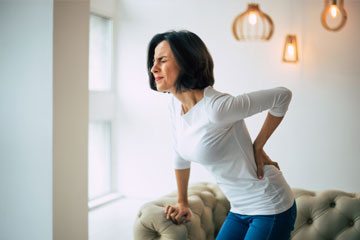
Have you ever felt a deep, steady ache or random sharp pain in your muscles? This type of pain usually occurs when you start workouts for the first time or after a gap, or when you perform strenuous tasks. Muscle pain or muscle soreness might be the sign of injury, infection, disease or other severe health problems. The intensity of the pain can vary from person to person. The pain can occur all over the body or affect a specific area. The common factors that cause muscle pain are:
- Autoimmune disease
- Stress
- Infections
- Deficiency of nutrition
- Injuries
- Dehydration
- Medications
- Sleep deficiencies
- Neuromuscular disorder
- Strenuous exercises or workouts
Acute muscle soreness or immediate muscle soreness and delayed onset muscle soreness (DOMS) are the two types of muscle pain that people experience more often. Muscle soreness is a kind of burning pain soon after the exercise. The symptoms of DOMS or sensation of pain or stiffness reach at its peak within 24 to 72 hours after performing exercise. Both acute muscle soreness and DOMS can occur together.
Along with muscle soreness and discomfort, other symptoms of muscle pain include:
- Stiffness and weakness in the affected muscle area.
- Fever
- Dizziness
- Rashes
- Breathing difficulties
- Redness
- Swelling
Gentle exercises may be performed even if you have muscle pain. However, whether you should continue depends on the severity of soreness and symptoms.
Tips to Ease Muscle Pain
Here are some strategies that can help reduce muscle soreness, lessen muscle damage from exercise, and promote faster muscle recovery:
- Stay Hydrated
Drinking enough water in a day is important for maintaining the right level of hydration. Staying hydrated is an important aspect of muscle pain recovery. Accurate level of water keeps the fluid traveling through your system which helps reduce inflammation, clear out the waste products from the body and supply nutrients to your muscles. Drink at least 8 glasses of water a day to stay hydrated.
- Include More Anti-Inflammatory Foods In Your Diet
Studies have found that consuming antioxidant rich foods might ease muscle pain or muscle soreness. Watermelon is a good option as it is rich in L-citrulline amino acids that can reduce muscle soreness. Other anti-inflammatory items to include in your diet are:
- Cherry juice
- Pineapple
- Ginger
- Fatty fishes
- Pomegranate juice
- Beetroot juice
- Eggs
- Dairy products
- Starchy vegetables
- Coffee
- Use a Foam Roller or Muscle Gun
Foam rollers apply a massage-like effect to the soft tissues , relax the muscles and relieve discomfort. Known as self-myofascial release (SMR), this technique is used to release tension from muscles and connective tissues and move the fluid accumulated after exercise. Foam rolling can loosen the muscles, release muscle knots and reduce DOMS. You can also use a massage gun or a lacrosse ball instead of a foam roller.
- Heat Therapy After Exercise
Applying heat immediately after the exercise can reduce risk of DOMS. Dry and moist heat is an ideal option for reducing muscle pain. The best ways to perform warm heat therapy are:
- Warm damp towels or cloth
- Wet heating packs
- Warm bath
- Engage in Easy And Light Physical Activities
When you feel muscle soreness, don’t stop physical activity. Perform light and easy physical activities like aerobics, walking, and jogging. This will increase blood flow to the muscles and could improve DOMS. However, it is necessary to cool down or take enough breaks between the activity to restore normal heart rate and breathing.
Other strategies to reduce muscle pain include:
- Wear a compression garment
- Massage treatments
- Cold and heat therapy
- Eat dairy products
- Take antioxidant supplements like curcumin and fish oil
If the pain increases or doesn’t go away in a few days, see your doctor.